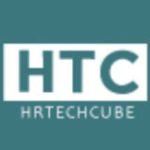After the Great Resignation, 2022 is a breeding ground of opportunities for talent assessments. So, how will strategy-making help a hiring decision?
Businesses are influenced by hard-to-fill positions, departing top performers, and team bonding. Onboarding talent is a tricky and intriguing task. Talent assessments initiate the hiring process. If done right, talent assessments become the guide for a company’s candidature outline. The cost of hiring or replacing talent is subjective to every industry and position. But according to SHRM, it fluctuates from one-half to two times the departing employee’s salary.
Many organizations have had more than expected employees quitting over a certain period. This high turnover rate is daunting for some but we’d suggest you look at it in another way. Let’s understand how you can shape your 2022 strategies with talent assessments-
Going back to basics
If your organization is facing high turnover rates, it is the best time for you to take a step back and analyze. It is an opportunity to inspect the existing work culture, employee performance, and feedback. An organizational-level SWOT analysis is beneficial for balancing company visions and goals.
HR encompassing technology with big data, analytics is a significant part of talent acquisition. The availability of multiple tech tools is helping the no-sweat hiring process. Organizations can draw out an ‘ideal candidate’ for your company according to your industry and position. You can compare the personality and aptitude of a potential employee to that of an ideal candidate.
A generational take on job opportunities is crucial. Most millennials and Gen Z are confident about their stance on jobs. So, HR professionals need to devise a strategy for talent who knows their value proposition. Companies work out well only if the employees feel heard and have a sense of belongingness.
The scientific approach
HR is all about people. But a scientific approach gives us reasoning to make sense of the little information. Science is about analyzing and structuring processes – which is what HR deals with too. It’s just not about observation, hypothesis, prediction, and experimentation. With tech in hand, it’s easier to take these approaches.
Psychometric tests emancipate a candidate’s personality and aptitude in and out. It is a set of questionnaires that toggles with options. It is not easy to cheat or pretend. The brief analysis report aids in understanding the ‘why’ behind an individual’s opinion. They don’t assure 100% certainty. But a probability of 30% can save a lot of time and effort.
There is less pressure on the interviewer. It doesn’t depend on the interviewer’s ‘gut feeling’ but goes with a systematic approach. Tests don’t look at individuals with any bias. Regardless of caste, gender, or any belief, they assess an individual purely on basis of their talent.
Talent Mapping with insights
As HR professionals, we are dependent on data insights. Collecting, analyzing, and organizing data is a major factor of HR analytics. Through these factors, we can predict future talent. A strategic hiring process helps in prioritizing. Talent mapping aids in focusing on what’s necessary at the moment. This increases efficiency and impacts the company’s growth.
As the years’ pass, an organization changes its objectives for the future. The change is slow and keeping track is essential. With data insights, you can create a visual structure for future staffing. After a decided period, HR professionals should take this opportunity to alter or pivot existing operational processes.
Talent Mapping helps plan for employee gaps. It is going to be essential as a company grows. By including talent assessment tests, companies establish an effective hiring process. It further will translate into no mis-hires, a culturally-diverse work environment, and hardworking and honest employees.
To conclude
Let’s understand in brief what we learned from the article above.
There are three key factors to consider when making a hiring decision. Firstly, take some time to understand the high turnover. By taking a step back, you can target a thousand steps ahead. Secondly, it is a scientifically sound decision that will enhance the company’s leadership and overall performance.
Lastly, consider the future change in a company’s vision and checkpoints. Behind an individual’s personality traits, innate abilities, and cognitive capacities, there is a person with passion and dreams. If the employee is highly engaged, it is less likely that they will leave the organization. So, the transparent and bias-free talent assessments will encourage individual personal growth and performance.
For more such Updates Log on to www.hrtechcube.com

